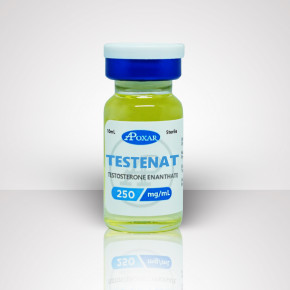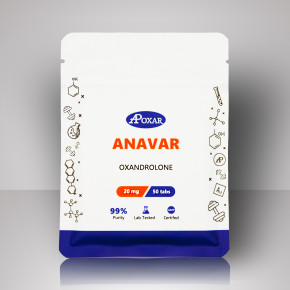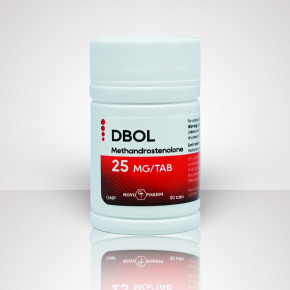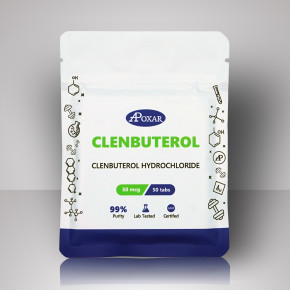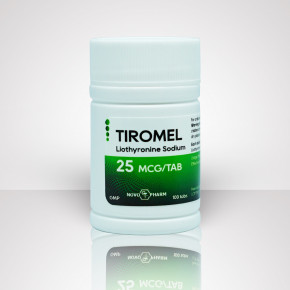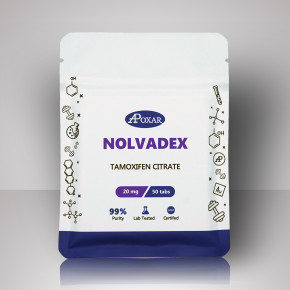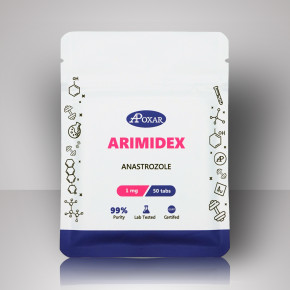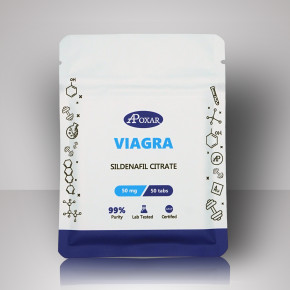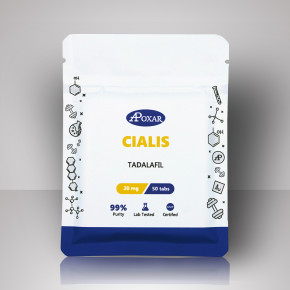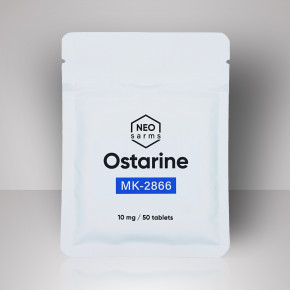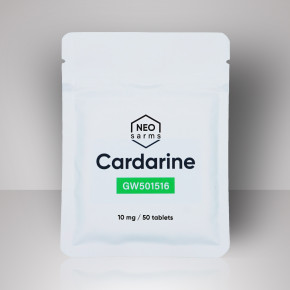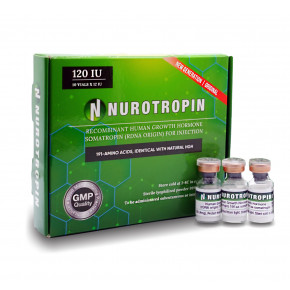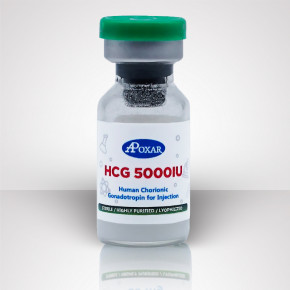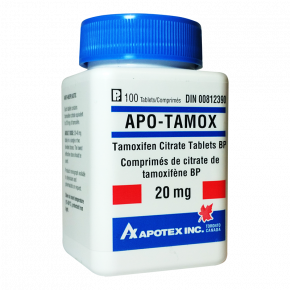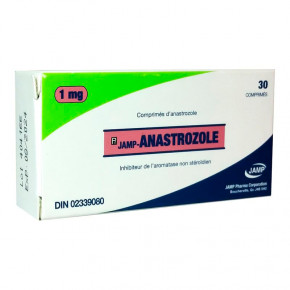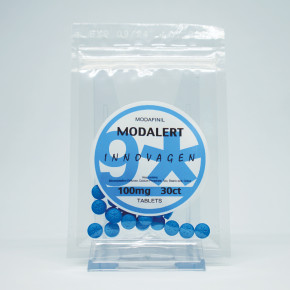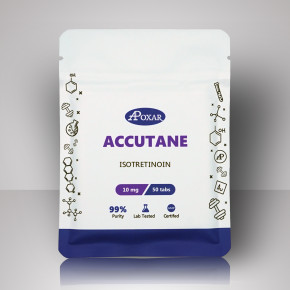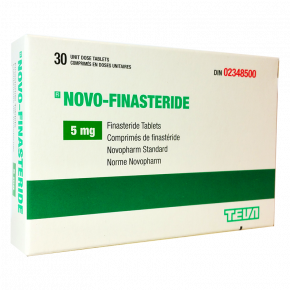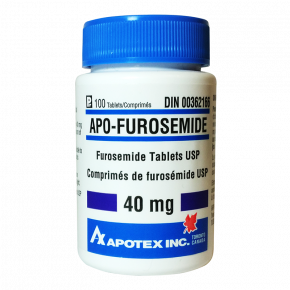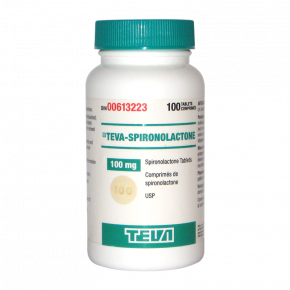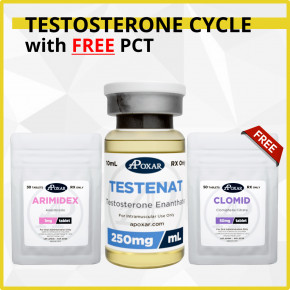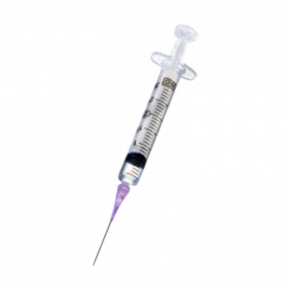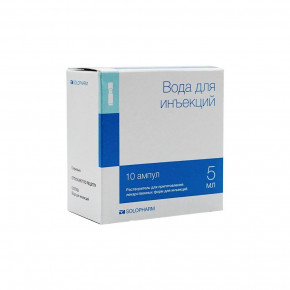 Proudly Serving Canadians Since 2012
Proudly Serving Canadians Since 2012Clomid - Clomiphene Citrate
Clomid has strong anti-estrogen properties and usualy used after steroid cycle as part of Post Cycle Therapy for enhanced recovery of natural Testosterone production and muscle gains protection. (Use after Trenbolone, Nandrolone, Oxymetholone cycles. Do not use Nolvadex in such case.) 50-100 mg for 30 days at the conclusion of a steroid cycle
-
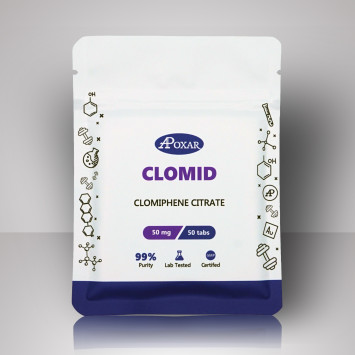
Clomid - Clomiphene (Anti-estrogen, PCT) 50mg/50tabs - Apoxar
Clomiphene Citrate blocks estrogen receptors at the cellular level and doesn’t suppress body’s own estrogen production.
- It also helps restore natural testosterone production.
- Use for PCT after Nandrolone and Trenbolone cycles
- Helps to maintain muscle gains after the cycle.
- PCT duration with Clomid 4-6 weeks at 50-100mg/day
Quality Guaranteed: Lab Test Results
Increases Strength
Improves Sex Drive
Muscle Gains
$75.00 -
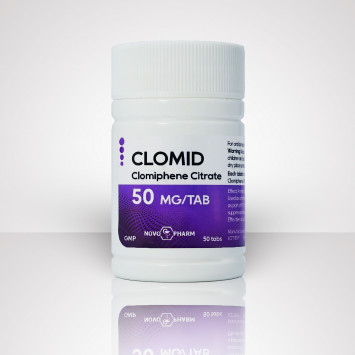
Clomid - Clomiphene (Anti-estrogen, PCT) 50mg/50tabs - NovoPharm
Novo-pharm Clomiphene Citrate blocks estrogen receptors at the cellular level and doesn’t suppress body’s own estrogen production.
- It also helps restore natural testosterone production.
- Use for PCT after Nandrolone and Trenbolone cycles
- Helps to maintain muscle gains after the cycle.
- PCT duration with Clomid 4-6 weeks at 50-100mg/day
Increases Strength
Improves Sex Drive
Muscle Gains
$75.00
Clomid Description
Clomid (clomiphene citrate) is an anti-estrogenic drug that is prescribed to women to treat anovulatory infertility, or an inability to ovulate. In clinical medicine, it is specifically referred to as a nonsteroidal ovulatory stimulant. The drug works by interacting with estrogen receptors, often in an antagonistic manner, in various tissues of the body including the hypothalamus, pituitary, ovary, endometrium, vagina, and cervix. One main focus is that the drug will oppose the negative feedback of estrogens on the hypothalamic-pituitary-ovarian axis, enhancing the release of gonadotropins (LH and FSH). This surge in gonadotropins may cause egg release (follicular rupture), ideally leading to conception. Clomiphene citrate is chemically a synthetic estrogen with both agonist/antagonist properties, and in this regard is very similar in structure and action to Nolvadex®. It is believed that both the estrogenic and anti-estrogenic properties of clomiphene citrate play a role in its ability to support female fertility.
In men, Clomid also acts as a partial anti-estrogen and may be used to counter some of the side effects of aromatizable steroid use including gynecomastia and increased water retention. As an anti-estrogenic drug, clomiphene citrate may also produce an elevation of follicle-stimulating hormone, and luteinizing hormone levels, which can elevate testosterone production. This effect is especially beneficial at the conclusion of a steroid cycle when endogenous testosterone levels are depressed. Here, clomiphene citrate is most often applied in combination with hCG and tamoxifen, in an effort to restore endogenous testosterone production more quickly. If testosterone levels are not brought back to normal in a short period of time, a significant loss in size and strength may occur. This is due to the fact that without testosterone (or other anabolic/androgenic steroids) to impart an ongoing anabolic message, the catabolic hormone cortisol becomes the dominant force affecting muscle protein synthesis. Often referred to as the post-steroid crash, when not corrected this state of imbalance in the endocrine system can quickly reduce muscle mass levels, diminishing the long-term return on anabolic/androgenic steroid therapy.
Note that the triphenylethylene compounds (toremifene citrate, tamoxifen citrate, clomiphene citrate) tend to be somewhat intrinsically estrogenic in the liver. This means that while they can block estrogenic activity in some areas of the body, they can actually act as estrogens in this other key area. Estrogenic action in the liver is important in the regulation of serum cholesterol (it tends to support HDL synthesis and LDL reductions). Since steroid-using bodybuilders are already dealing with the negative cardiovascular effects of these drugs, compounding the issue with aromatase inhibitors (which will lower total serum estrogen levels) may not always be the best option. Using a drug that blocks gynecomastia, for example, while at the same time supporting improved cholesterol values, might be much more ideal.
History
Clomid is a fertility drug with a substantial history of use in the United States. It first gained widespread acceptance during the early 1970s and has been a drug common to the fertility practice ever since. The drug is now considered a standard medication for certain forms of fertility therapy and has been adopted as such far outside the U.S. border. Clomiphene citrate is presently available in most nations worldwide. The two most popular brand names one is likely to encounter are Clomid and Serophene, although the drug can be found under numerous other trade names as well including (but not limited to) Sepafar, Omifin, Pergotime, Gonaphene, Duinum, Clostil, Ova-Mit, and Clostibegyt. Clomiphene citrate is generally a very inexpensive medication compared to stronger anti-estrogens such as the newer selective third-generation aromatase inhibitors. It, likewise, remains a very popular agent of use among bodybuilders and athletes.
How Supplied
Clomid (clomiphene citrate) is most commonly supplied in tablets of 50 mg.
Structural Characteristics
Clomid (clomiphene citrate) is classified as a selective estrogen receptor modulator, with both agonist and antagonist properties. It has the chemical designation 2-[4-(2-chloro1,2-diphenylvinyl) phenoxy] triethylamine dihydrogen citrate.
Warnings (Visual Symptoms)
Some patients using clomiphene citrate notice blurring or other visual disturbances such as spots or flashes¹. These symptoms occur more frequently at higher doses or longer durations of therapy and often disappear within a few days or weeks of use. Prolonged visual disturbances have been reported after the discontinuation of clomiphene citrate therapy, however, and in some cases may be irreversible. Those taking clomiphene citrate should be warned that these symptoms might make activities like driving a car or operating heavy machinery more hazardous than usual. While the exact cause of these visual symptoms is not yet understood, it is advisable to discontinue treatment and have a thorough medical/opthalmological examination should they occur.
Side Effects
Clomiphene citrate appears to be well tolerated, with a low incidence of significant side effects. Common adverse reactions during clinical trials included ovarian enlargement (13.6%), vasomotor flushes (10.4%), abdominal discomfort (5.5%), nausea/vomiting (2.2%), breast discomfort (2.1%), visual symptoms (1.5%), headache (1.3%), and abnormal uterine bleeding (1.3%). Data also suggests that the prolonged use of clomiphene citrate may increase the chance of ovarian tumors. Clomiphene citrate is occasionally associated with a serious and potentially life-threatening side effect called ovarian hyperstimulation syndrome (OHSS). Early warning signs of OHSS include abdominal pain and distention, nausea, diarrhea, and weight gain.
Administration
Clomid is FDA approved for the treatment of women with ovulatory dysfunction preventing pregnancy. The recommended dosage is 50 mg daily for 5 days, which is initiated approximately 5 days into the menstrual cycle. If ovulation does not occur, follow up cycles may use a dosage of 100 mg per day for 5 days. Many clinicians recommend a limit of 6 courses of therapy. When used by men (off-label) to mitigate the estrogenic side effects of anabolic/androgenic steroid use, a daily dosage of 50-100 mg (1-2 tablets) is usually administered while any offending steroids are taken. Note, however, that tamoxifen is usually given preference over clomiphene citrate for this purpose. More commonly, clomiphene citrate is used by men at a dosage of 50-100 mg per day for 30 days at the conclusion of a steroid cycle, in an effort to bring natural testosterone production back to normal levels. Here, it is usually deemed most appropriate to use as part of a multi-component post-cycle recovery program. Female athletes occasionally use clomiphene citrate for the reduction of estrogenicity near the time of a bodybuilding contest. In some instances, this may aid in increasing fat loss and muscularity, particularly in female trouble areas such as the hips and thighs. The drug, however, often produces very troubling side effects in pre-menopausal women and is likewise not in very high demand among this group.
Availability
Clomiphene citrate is widely available on the international market in a variety of brand names. It generally sells for a reasonable price and is of low interest to counterfeiters.
References:

